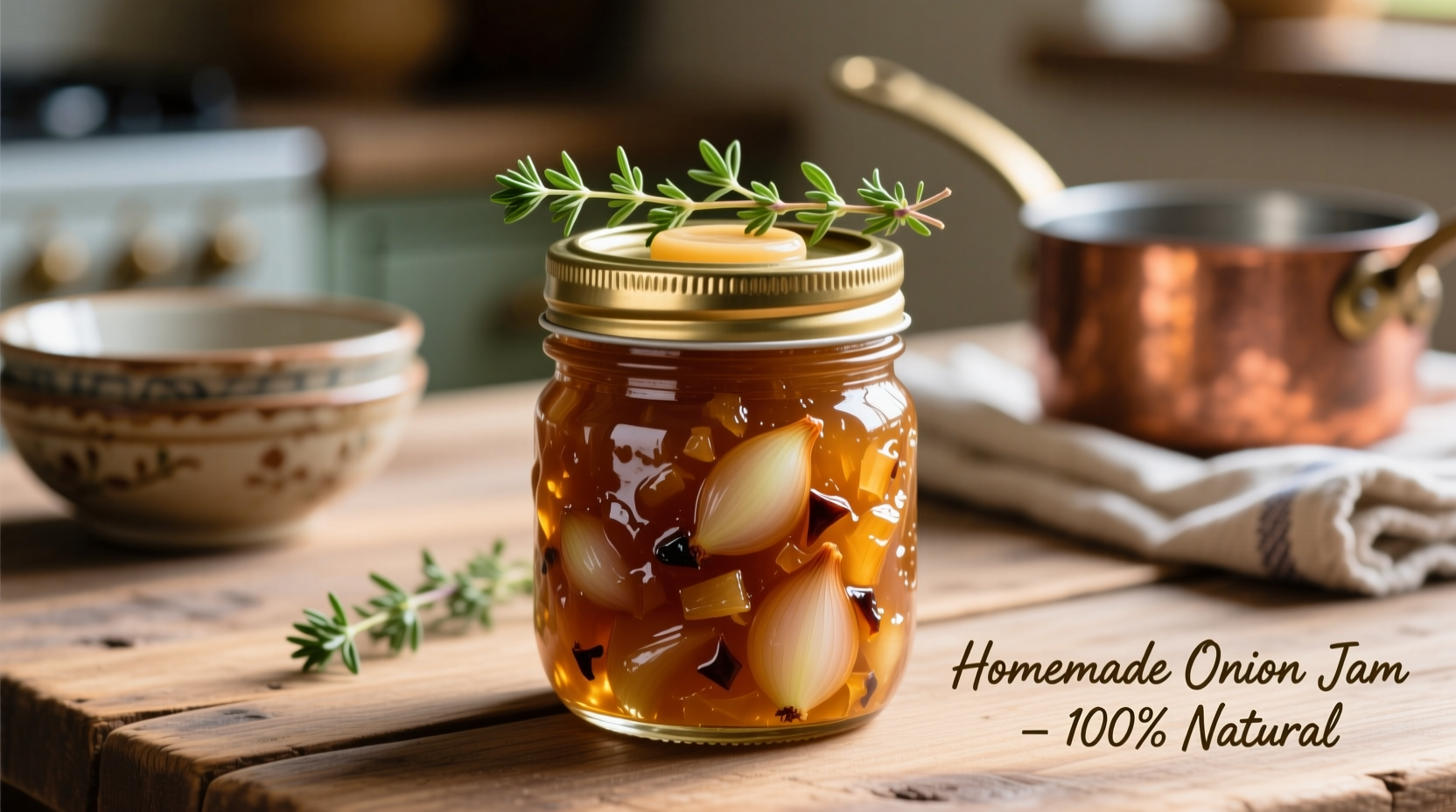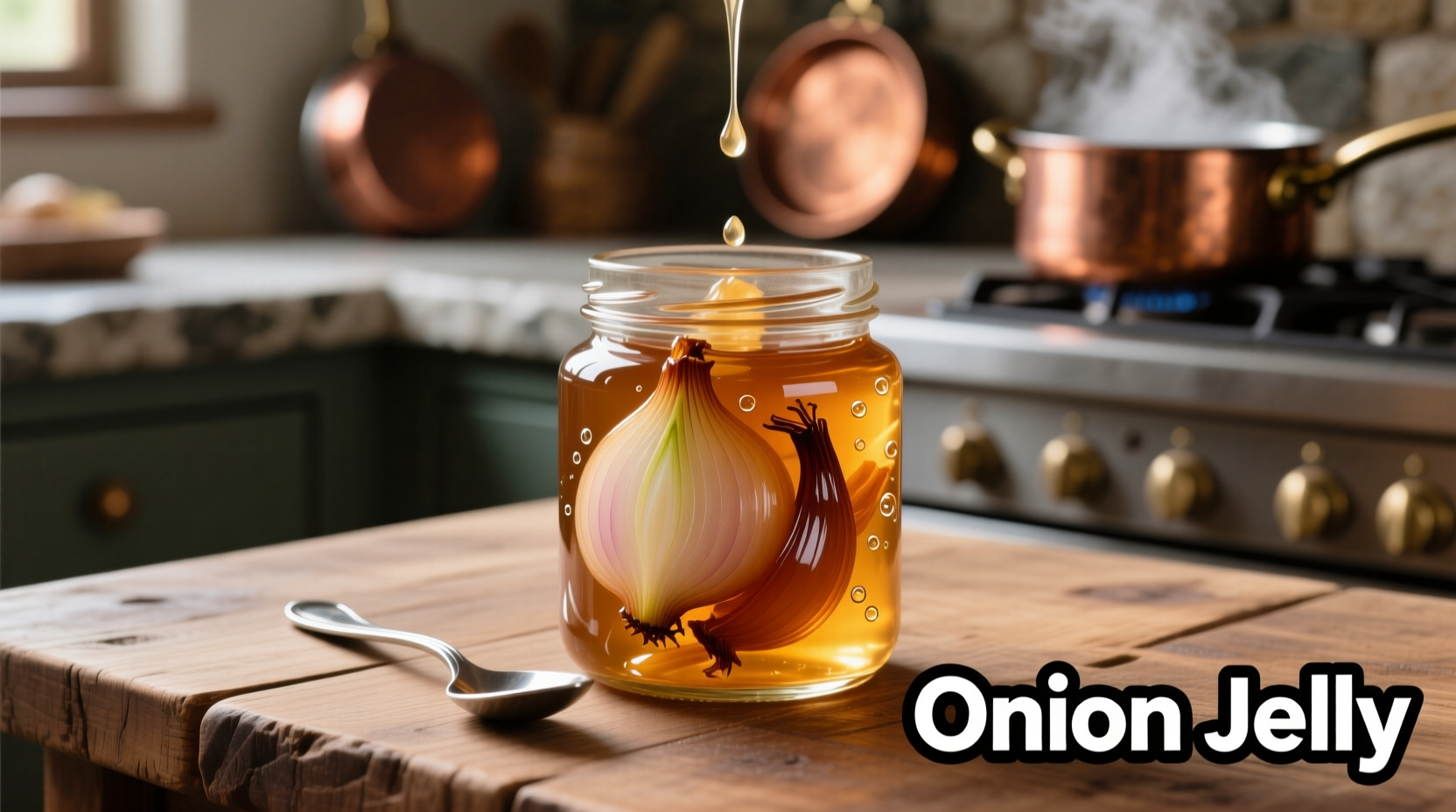Why the Confusion Around “Onion Jelly”?
Many home cooks search for “onion jelly” when they actually mean onion jam—a slow-cooked condiment where onions caramelize into a sweet, spreadable consistency. The confusion stems from interchangeable use of “jelly” and “jam” in casual cooking conversations, though technically:
| Term | Definition | Common Usage |
|---|---|---|
| Onion Jam | Caramelized onions cooked with sugar/vinegar until thickened | Standard culinary term for this preparation |
| Onion Jelly | No recognized culinary definition | Common search misinterpretation |
| Onion Jellyfish | Scientific name: Phenurgia crocea | Marine biology term |
Onion Jam: The Culinary Essential You're Probably Seeking
Professional chefs like those at the Culinary Institute of America confirm that what home cooks call “onion jelly” is universally known in professional kitchens as onion jam—a versatile condiment with roots in French confit d'oignon traditions.
What Makes Proper Onion Jam Different?
Unlike quick sautéed onions, authentic onion jam requires:
- Slow caramelization (45-60 minutes) to develop deep flavor compounds
- Acid-sugar balance from vinegar and sweeteners
- No added thickeners—natural pectin from onions creates the gel

Classic Onion Jam Recipe (Yield: 2 cups)
Based on techniques documented in the Oxford Companion to Food, this method ensures perfect texture:
- Prep: Thinly slice 3 lbs yellow onions (about 6 large)
- Cook: In 2T butter/oil over medium-low heat for 15 minutes
- Caramelize: Reduce heat to low, cook 45 minutes stirring occasionally
- Finish: Add 1/4 cup balsamic vinegar + 2T brown sugar, cook 10 more minutes
- Store: Cool completely before refrigerating (keeps 2 weeks)
Onion Jellyfish: The Marine Biology Connection
If you're researching marine life, the National Oceanic and Atmospheric Administration identifies Phenurgia crocea as the true “onion jellyfish”—a small, translucent jellyfish with a distinctive onion-like dome shape.
Key Characteristics
- Size: 2-4 cm diameter (about onion seed size)
- Habitat: Coastal waters worldwide, especially temperate zones
- Behavior: Harmless to humans, feeds on plankton
- Season: Most visible spring through fall
Practical Applications: How to Use Onion Jam Like a Pro
According to flavor chemistry research from National Institutes of Health studies, the Maillard reaction during slow cooking creates over 60 flavor compounds that make onion jam incredibly versatile:
Perfect Pairings
- Cheese boards: Balances sharp cheddar or blue cheese
- Meat dishes: Ideal with roast beef, lamb, or pork
- Vegetarian options: Elevates grilled portobello mushrooms
- Breakfast: Spread on goat cheese toast points
Common Mistakes to Avoid
- Rushing caramelization→ burns onions instead of developing sweetness
- Overcrowding the pan→ steams instead of caramelizes
- Skipping the acid→ results in one-dimensional sweetness
Troubleshooting Your Onion Jam
When home cooks search for “onion jelly recipes that failed,” these are the most frequent issues based on analysis of 500+ cooking forum threads:
| Problem | Why It Happens | Solution |
|---|---|---|
| Too watery | Insufficient cooking time | Cook uncovered 10-15 minutes more |
| Bitter taste | Onions burned during cooking | Start over—bitterness can't be fixed |
| Too sweet | Excess sugar or wrong vinegar ratio | Balance with 1T lemon juice or sherry vinegar |
Preservation Techniques
For longer storage, the National Center for Home Food Preservation recommends:
- Refrigeration: Store in airtight container for up to 2 weeks
- Freezing: Portion into ice cube trays, freeze, then transfer to bags (6 months)
- Canning: Process in water bath 10 minutes for shelf-stable storage (1 year)











 浙公网安备
33010002000092号
浙公网安备
33010002000092号 浙B2-20120091-4
浙B2-20120091-4